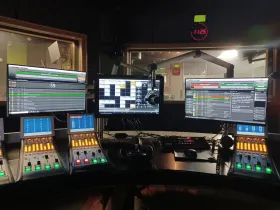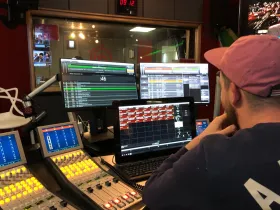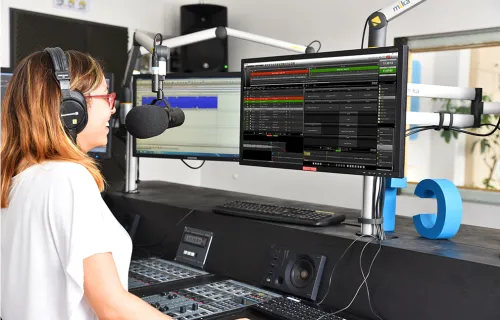The BBC has been using CGI’s dira software for more than 20 years — a long-term relationship that has seen significant change and its fair share of challenges
LONDON — The broadcaster-vendor relationship between the BBC and CGI’s dira product suite goes back to the early “noughties.” It has bridged company acquisitions and name changes, seen considerable changes in scope, managed to keep pace with the fearsome acceleration in broadcast technology and is still thriving and looking forward to the future. I’ve known some of the CGI employees — I consider them friends now — for 20 years; that’s longer than I’ve been married.
The genesis of dira becoming the pan-BBC standard for radio production lies back in 2002, when VCS, as it was then, was chosen to provide an audio playout system for the BBC’s network radio stations based at the historic Broadcasting House in London. This quickly evolved further as the Radio 5 Live news and sport station was also looking to replace its antiquated systems. The version that VCS wrote for network radio, Radios 1, 2 and 3, was based on two separate programs: music and speech. But BBC News and Sport wanted a client-based software tool that would allow them full control over the MAM. VCS designed it and called it “Highlander.” That piece of software was first used by News and Sport on Five Live in Television Centre in 2004.
Soon afterward, the need for a company-wide solution became apparent, and CGI won a competitive pitch open to all leading vendors. CGI refined Highlander and rolled it out to all the other internal BBC networks. It was an impressive pivot — the software originally developed to run only as a single system for one or two networks was rolled out across BBC Radio. Furthermore, CGI was able to productize Highlander. Now renamed dira, it powers broadcasts worldwide.
“The BBC project implemented a standard to exchange metadata — scheduling information and essence files between various systems, enabling users and presenters to prepare and playout programs from all BBC sites,” explains Michael Thielen, vice president of radio solutions at CGI. “In addition, we integrated various third-party systems with dira to allow for seamless integration into the existing infrastructure.”
It’s perhaps important to recognize how revolutionary some of the workflows that Highlander enabled were. The underlying architecture and how CGI developed the software-enabled remote and distributed workflows about 15 years before the COVID pandemic made them mandatory.
Workgroups based in Wales, Manchester or London could access any of those systems from any of their clients. This allowed a much more mobile way of working. A Radio 1 broadcaster in Salford, outside Manchester, could log onto a terminal and access their database in London. The other upside was if they were in a radio studio anywhere, they could access a playout schedule and play material from that studio.
Changes and challenges
As befits an ongoing project of this length, there has been no shortage of changes and challenges. For example, when the BBC was restructuring and looking to reduce its real estate footprint — doing more but in fewer buildings — and the decision to move the nascent dira underlying OS away from OpenVMS, which underpinned a lot of banking systems at the time due to its reputation for rock-solid reliability and security. We had machines that had been running for five years without a single reboot, so there were issues moving over to Windows. But CGI is very good at finding the root cause of any issues and finding a solution. After a period of some pain, it’s been a remarkably reliable piece of software again.
Today, dira is used across the BBC throughout the United Kingdom, apart from Northern Ireland (which has yet to upgrade its systems), and in 15 international bureaus, allowing users to access material worldwide. Over the course of the relationship between the two companies, CGI has developed other solutions. dira Scotty, for example, first saw action as a new system for field-based file/ metadata upload designed for the BBC. It’s a constantly evolving project that has endured across different controllers and program managers, becoming more complex along the way.
The question now is how to evolve the BBC’s dira systems further to cope with the production demands of the future. The BBC is keen to move to a browser-based virtualized solution to speed up the iterative process of development and improve the deployment of agile solutions across thousands of users on thousands of machines across the whole corporation. I’m confident that will happen. As a support department inside the BBC, it’s reassuring to know we have experts on the phone or available by email who know our system inside out and resolve any issue we have.
The author, Vijay Patel, is engineering operations manager at the BBC.
This article originally appeared in RedTech Magazine (January/February 2023 – No 13 – page 12), a business and technology publication covering the global radio broadcast and digital audio industries.







